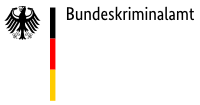The Bundeskriminalamt maintains centralised identification facilities and collections. These are used, among other things, for
- identification of persons
- identification of corpses
- determination of possible links between crimes
- conducting identification proceedings and
- preparing expert opinions for police and judicial authorities.
Some possibilities for identifying persons include comparison of fingerprints, photographs, voice or DNA analyses.
As an unchangeable and uniquely individual characteristic, the fingerprint is of special interest to the police as a means of identification. The BKA receives a copy of every fingerprint sheet made during identification measures in Germany. Scanners are used to read the fingerprints into the Automated Fingerprint Identification System (AFIS) where they are compared with other fingerprints, for example those left behind at crime scenes by unidentified persons.
By this means, suspects can be identified quickly, innocent persons cleared of suspicion, and links between crimes discovered. At the present time, fingerprint sheets of more than 3,200,000 persons are on file at the Bundeskriminalamt.
Based on these files, in 2009 the BKA was able to link fingerprints to specific persons in approximately 38 per cent of the cases handled by the identification service.
On average, about 27,000 fingerprint sheets are sent to the Bundeskriminalamt each month for comparison. At the same time, the material in the files is cleared on a regular basis in accordance with the provisions of data protection law. After a predetermined period of time, the respective fingerprint sheets are removed from the files. In 2009 this was done with approximately 200,000 fingerprint sheets.
Since the beginning of 2006, it has been possible to identify persons by fingerprints not only at the telephoto or live scan station but also in the patrol car with the Fast-ID system. Fast-ID is a mobile single-finger scanner, with which two or more fingerprints can be recorded and checked against the entire AFIS data collection. In the case of a hit, the response time between approximately 3 and 5 minutes, in the case of no hit 1 to 3 minutes. Since its introduction, the fast ID fingerprint identification system is now used by 10 federal states. The implementation of the system in further states is already in the planning phase.
Within the framework of international legal assistance, in 2009 the BKA also received about 6,400 fingerprint sheets from other countries for analysis.
It is not only the lifting of fingerprints that belongs to this identification procedure but also the taking of photographs and personal descriptions. The photographs are now only taken electronically throughout Germany and are stored centrally at the Bundeskriminalamt. Currently, there are approximately 3m photographs of 2.3m different persons and about 2.3m personal descriptions stored in the German police information system (INPOL).
INPOL allows all local police services to have immediate and up-to-date access to the photographs as well as the personal descriptions for the fulfilment of their various tasks. The BKA exchanges over 40,000 photographs/personal descriptions annually with INTERPOL and SIRENE offices for searches, clearing up and/or preventing offences as well as the identification of persons (unidentified bodies, helpless persons).
Since 1998, there has been a central DNA analysis database at the BKA intended to assist in the quick and accurate identification of repeat offenders who have committed serious crimes. If physical evidence from unidentified offenders is recovered, their body cells can be analysed and, with the assistance of the DNA database, links to the crime can be established. Only data collected from accused and convicted persons and crime scene prints are stored in the database in accordance with strict legal provisions. Only the noncoding part of the DNA required for identification is analysed. Subsequently, the samples taken from persons are destroyed. At the end of 2009, almost 850,600 data records were included in the DNA analysis database, 20 per cent of which were crime scene prints of offenders yet unidentified. At the end of 2009, the clear-up rate was 32,3 per cent, i. e. at least every 3th stored DNA sample helped to identify perpetrators.
When “identification proceedings” are conducted, identification aids such as fingerprinting and photography are used to ascertain the “legitimate” personal particulars of a person. This is important because, for example, the previous convictions of offenders are on file at the Federal Registry of Judicial Antecedents under their respective personal details. There are also ever more frequent cases in which criminals use the particulars of other persons, thus casting suspicion on innocent and lawabiding citizens.
In 2009, together with local and foreign police services, the Bundeskriminalamt identified the legitimate personal particulars of over 1,000 persons on the basis of birth certificates and identifying witnesses.


